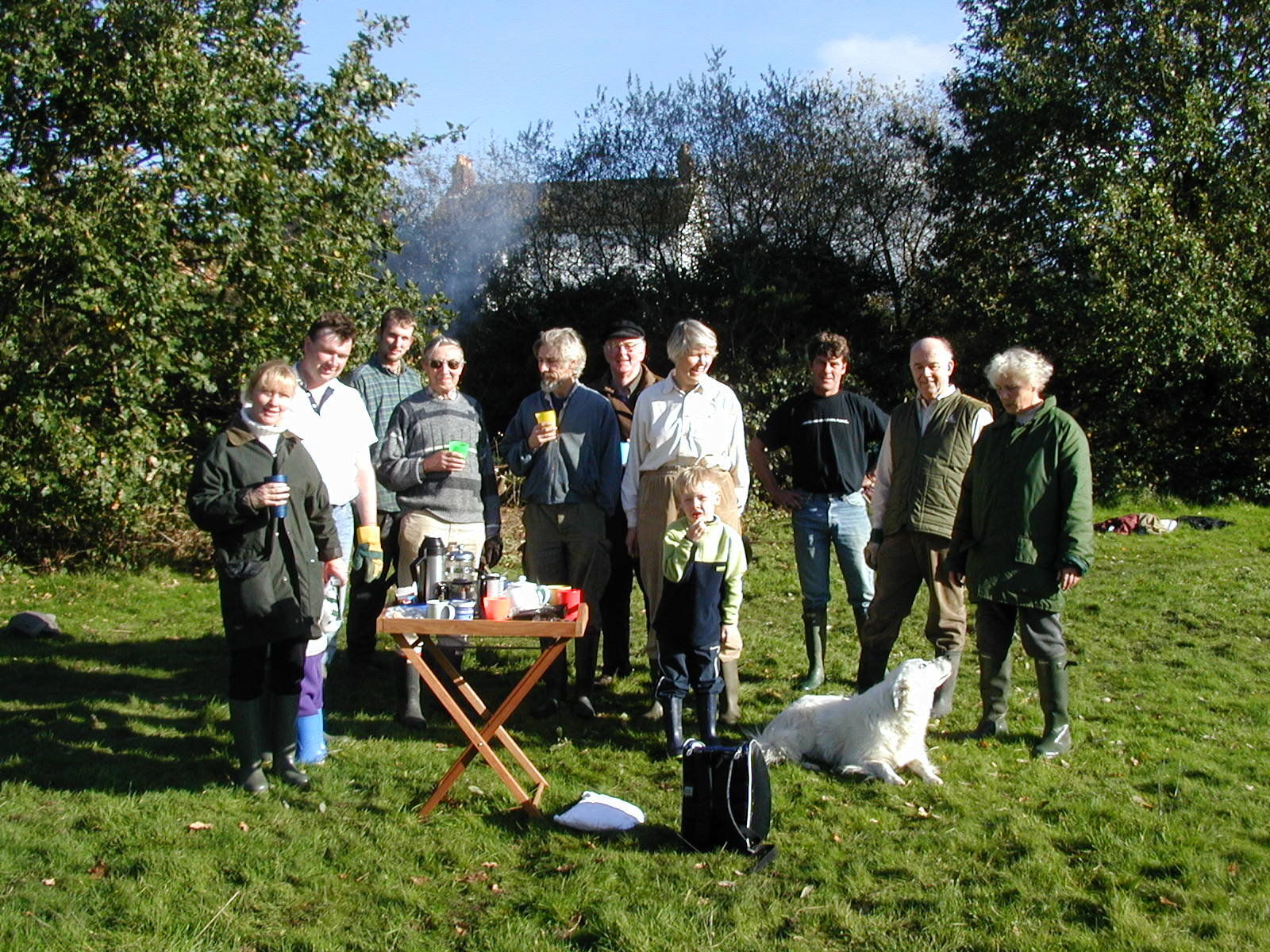Volunteers
The time has come to ask if any villagers would be interested in helping us to manage the Common and the Village Pond?
The Common has had a management team since 1992, whose objective is: “To protect and conserve the unenclosed character and naturalness of the site for the benefit of the flora, fauna and other wildlife and for its quiet enjoyment by the public on foot and for the enhancement of its natural beauty through positive and sensitive management.”
The key words are: its naturalness, benefit (to) wildlife and quiet enjoyment by the public on foot. The management team endeavours to achieve and maintain a balance between conserving the wildlife and maintaining access for the public on foot. Villagers who come to the Common tell us that they enjoy its naturalness and the wildlife, though some have said the pathways could be more accommodating to the public on foot. One thing that we’ve always wished is that villagers might come to the Common, walk the paths and enjoy the naturalness. It is a pleasant tranquil Common.
We hope that others interested in nature and its conservation might like to join us. It would be an opportunity to learn about the flora and fauna living in the different habitats and help to maintain the Common in a way that will attract more visitors. Local conservation groups provide training courses so volunteers can gain understanding and skills to increase their enjoyment of volunteering.
The study of wildlife is interesting and its conservation is a worthwhile and satisfying pastime. We should care as much for our wild environment as we do for our gardens.
| Volunteers enjoying a tea break during a common clearing session in 2001.Volunteers enjoying a tea break during a common clearing session in 2001.Who can you recognize? |  |
Response to concerns about the common and pond management
Terence Prideaux, Chris Wege and I have been discussing criticisms that have recently been raised about the management and condition of the Common and the Village Pond.
Ducks: Ducks are an emotive issue so it may not be possible to satisfy the concerns of those who worry about their living conditions in our drying pond. I should just point out that they are wild and beyond our control.
Pond water level: This Summer the pond has dried out considerably, an event that may become more frequent with the projected warmer Summers. Some suggest it should be topped up from the mains water supply. This would be costly and a waste of a treated and valuable water supply. It would also deliver unwanted chemicals into the pond, which themselves can cause problems.
Fish: We have always had a sincere ambition to re-introduce (the right species of) fish into the pond but we want to do this only once a good population of pond plants, both marginal and open water, are established. Fish predate on the embryonic and development stages of the amphibians that used to breed in high numbers. Do you recall the large migrations of frogs and toads that we used to have? They can find shelter and security amongst good vegetation. Newts lay their eggs wrapped in the leaves of open water plants and there are many invertebrates that thrive amidst a good variety of plants. This year, both the open water plants and the fish would have struggled to survive. We are seeking advice as to how this can best be managed.
A pond that is good for wildlife will also be good for the village to enjoy. A healthy pond would also benefit the school as pupils can enjoy pond dipping.
The Common: Some people feel that if the view across the Common from Windmill Hill is obscured by vegetation, people walking on the Common will feel less secure.
Over the years we have tried to address this concern. Initially, the Heritage Lottery funded work to do some significant clearing along Windmill Hill and since then we have continued to cut trees or shrubs seeming to present a problem and will be doing some more coppicing in the coming months.
Ticks: This concern may also be about how we manage the grassland but ticks live everywhere, particularly in woodland. I have found two official and informative links:
https://www.nhs.uk/conditions/lyme-disease
https://publichealthmatters.blog.gov.uk/2014/03/24/tips-and-tricks-to-stay-safe-from-ticks/
Storm damaged trees: The condition of some of the potentially dangerous trees close to paths was checked, though judging safety in the woods to visitors from falling timber is difficult, not unlike judging when a volcano might erupt. We look for signs of roots moving, cracks appearing in trunks or branches and increased lean of the tree and fungal disease. Sometimes we ask for professional advice. I think in the past we have been too cautious and had trees felled or topped when they may well have been safe for some years to come but our sense of responsibility makes us cautious.
One piece of advice we are given is to advise walkers not to walk around in the woods in high winds.
A report on this Autumn’s work on the Village Pond
As I am sure many have noted, the water level in the pond dropped very low during the hot part of the summer. We have taken advantage of this situation to redistribute some of the silt, in particular moving some out of the depths and around the banks where we can plant waterside plants to add colour and interest.
Now, I know the pond looks raw and that there is more work to do but in Spring we shall begin to develop it into a well vegetated and diverse habitat.
Graham Thorne
